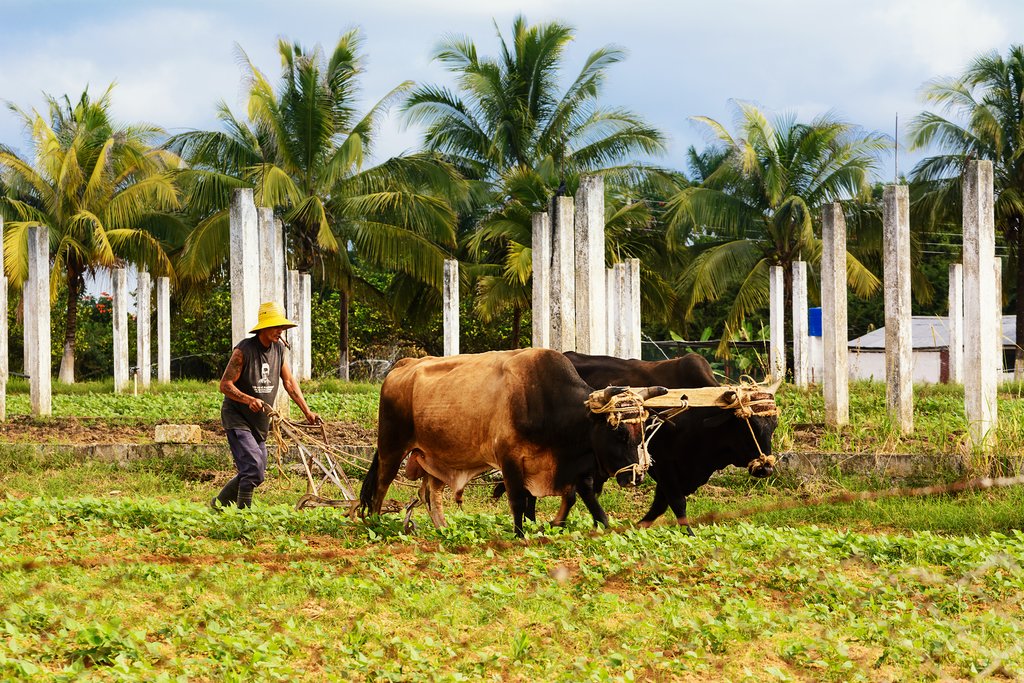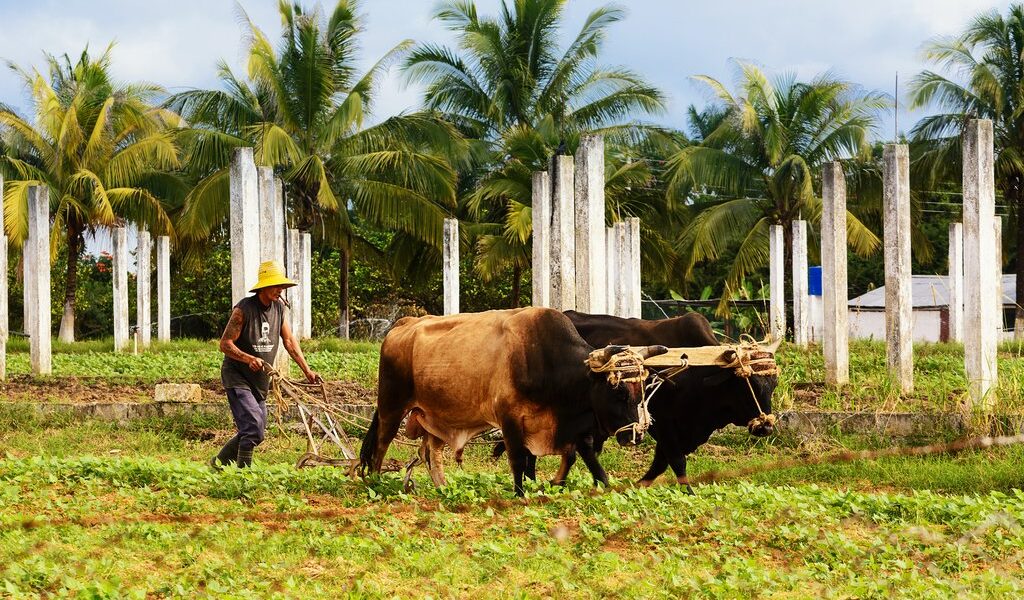
This is a peak month in Cuba for travel. Havana, Trinidad, and Viñales in the heart of tobacco country can all seem overrun (although things have eased in Havana since 2019, with U.S. cruise ships no longer calling). This is also a peak festival season, and Havana is abuzz with celebration. Hotel rates are high, but there are plenty of bargain-priced casas particulares (private B&Bs). And though weather is variable, you’ll mostly experience gorgeous sunny days.
## Cuba in January: A Traveler’s Guide
January in Cuba offers a compelling blend of pleasant weather and vibrant culture, making it a popular time to visit. However, it’s essential to be prepared for some weather variations and potential crowds.
**Weather in January**
Cuba in January generally enjoys some of the year’s most agreeable weather. Picture yourself under sparkling clear skies, basking in delightfully warm temperatures. It’s an idyllic scene, however, this Caribbean paradise can experience sudden temperature drops as cold fronts sweep down from the north. These fronts can bring prolonged winter rains, so pack accordingly. Even on those gloriously sunny days, remember that nighttime temperatures in January can be surprisingly cool.
The eastern provinces, often referred to as Oriente, tend to be less susceptible to these sudden and dramatic temperature fluctuations. This makes January an ideal time to explore central Cuba and Oriente, before the summer’s intense heat arrives. So, by all means, pack your shorts and swimwear to take full advantage of the beach weather, but don’t forget to include a sweater, a cozy fleece jacket, and reliable rain gear in your luggage. Layering is definitely the key to comfort in January’s diverse climate.
**Crowds and Costs**
Be aware that January falls squarely within peak tourist season in Cuba. Consequently, expect to see higher airfares and hotel rates. Even *casas particulares*, the charming private B&Bs that offer a taste of authentic Cuban hospitality, often increase their rates during this period. However, these *casas* still provide excellent value accommodation, especially when compared to the larger, state-run hotels. To secure your preferred accommodation, especially in popular spots, early planning is highly recommended. Booking reservations well in advance at the most sought-after *paladares*, or private restaurants, is also advisable, as is arranging for car rentals if you plan to explore the island independently.
While the main plazas in Havana can feel bustling, especially during peak hours, and colonial Trinidad, with its undeniable charm, draws its fair share of visitors, as do the popular beach resorts catering to Canadian and Northern European snowbirds seeking a respite from the winter chill, it’s important to know that the feeling of Cuba being overly crowded is often minimal. Venturing beyond the main tourist hotspots reveals a more tranquil and authentic side of the island.
**Where to Go in January**
With generally sublime weather prevailing, January presents a perfect opportunity to focus on outdoor activities and to explore the less-trodden paths of Oriente. Consider venturing to destinations further afield. In Havana, the weather is conducive to leisurely strolls through the historic colonial Habana Vieja and the architecturally rich streets of Vedado. When rain threatens, focus your attention on indoor venues such as the Museo Nacional de Bellas Artes or the Museo de la Revolución.
The “Holy Trinity” of Cuban tourism—Havana, Viñales, and Trinidad—are perennially popular destinations and can indeed feel crowded during the winter months. If you prefer to avoid throngs of tourists, consider setting your sights on lesser-visited gems such as Camagüey, renowned for its lovely colonial plazas and unique urban landscape. Or head eastwards to the captivating cities of Bayamo, Santiago de Cuba, and Baracoa, each offering a distinct flavor of Cuban culture and history.
For those fascinated by revolutionary history and the iconic figure of Che Guevara, a visit to Santa Clara and Santiago de Cuba is essential. If you possess an adventurous spirit and have ample time, consider adding a challenging yet rewarding hike to Fidel Castro’s guerrilla headquarters at La Comandancia de la Plata, nestled in the rugged Sierra Maestra Mountains of eastern Cuba. Another fascinating historical site is the former Castro family estate at Birán, located near Holguín.
**What to Do in January**
If you manage to secure a rental car (book well in advance!), there’s no better time to embark on a long and memorable road trip across the island. If you have just one week, head west from Havana to explore the ecological wonders of Las Terrazas, the breathtaking landscapes of the Valle de Viñales, and the pristine beaches of Cabo San Antonio, located at the westernmost tip of the island. With more time at your disposal, you can even undertake a complete circle of the island, passing through the historic city of Cienfuegos and the colonial jewel of Trinidad, then proceeding along the Carretera Central via Camagüey and Holguín to the vibrant cities of Santiago de Cuba and Baracoa, before returning to Havana along the scenic northern coast.
The warm, yet not excessively hot, weather in January is perfect for hiking and exploring Cuba’s diverse natural landscapes. The island offers a plethora of hiking possibilities. Excellent options include the numerous trails that wind through the Sierra Escambray mountains. Also consider the relatively little-visited Pinares de Mayarí or, for the ultimate hiking challenge, the overnight trek to the summit of Pico Turquino, Cuba’s highest mountain. Remember to pack sturdy footwear, warm clothing (temperatures can drop significantly at higher altitudes), and dependable rain gear.
**January Events**
* **Havana Jazz Festival:** Cuba’s most talented jazz musicians are joined by international stars for this vibrant, week-long festival held at various venues across the city. While its dates have shifted in the past, January has recently become the preferred month for this musical extravaganza.
* **Festival de la Trova Longina:** Held in Santa Clara, this celebration of traditional trova music will immerse you in the heart of quintessential Cuban culture. Experience the soulful melodies and romantic lyrics of traditional Cuban ballads.
* **Marcha de las Antorchas:** Every January 27th, university students participate in this powerful demonstration of remembrance. Carrying flaming torches, the students celebrate the birthday of Jose Marti, Cuba’s National Hero. The procession makes its way down La Escalinata, the university staircase, and culminates at the Fragua Martiana monument, the very place where Marti, as a young man, was forced to quarry limestone under harsh conditions.
This version is approximately 825 words.
B-657

